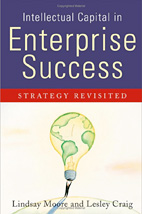Many manufacturing companies overlook the opportunity to patent aspects of their products or specialized manufacturing processes. This is especially true in the natural products industries, where unusual ingredients are often mixed together and specialized production processes are increasingly required to make food products and dietary supplement products that are acceptable to consumers. In most natural product categories, it takes substantial innovation for manufacturers to be able to produce successful functional and natural food or supplement products.
How Do We Think Strategically?
Within today’s rapidly changing corporations, individuals at all levels are increasingly called upon to demonstrate their ability to think strategically. However, many are inadequately prepared to perform this task. Many new executives, and even those long within the executive ranks, are unsure how to properly engage in strategic thinking.
Making Marketing Strategic
Marketing, as a functional discipline, has had to reinvent itself more than once during the last decade. Remember the distinction in the 1980s between “sales oriented” and “marketing oriented” companies? The first big change was during the early 1990s when marketing was routed from it pedestal in “marketing oriented” companies to become the handmaiden of branding…
Branding Diamonds
During the 1990s, De Beers Consolidated Mines began the then seemingly unusual practice of “Branding” its diamonds. It began inscribing a small Brand Mark on its stones to differentiate its products within the commodity marketplace, and to ensure their worth against the inexorable declining value of non-oil commodities. The growing success of Brands, Branding and the strategies of Consumer Packaged Goods (CPG) Marketing are widely recognized within the global business community.
Tech-Transfer Strategy
Tech-Transfer Strategy. Tech-Transfer as an Industry: Since 1980, the transfer of technologies developed at research universities to private industry has become big business in the U.S. During 2003 alone, tech-transfer revenues approached $1.3 billion, and more importantly, the economic benefits that were derived from the technologies that were transferred into the private sector are estimated to have exceed $41 billion in value.
Reverse Engineering for Competitive Advantage (PDF)
Reverse engineering competitors’ formulations is legal, can be ethical and can benefit a company’s strategic position in the marketplace – if it is pursued in the right way. As such, reverse engineering is a powerful product-development tool that can be used to trump even patent-protected formulations or proprietary compounds, thus enhancing a company’s place in the marketplace.
Has Strategy Changed?
Has corporate strategy changed? It seems we are out-of-date every time we turn around. Is there anything that isn’t changing? What about strategy? Has it changed? Today, many question and some undervalue the worth of strategy, believing either that they don’t need it, or that they already have it.
New Thinking About the Value of Strategy
During the 1960s and the 1970s, “strategic planning” emerged as the model for corporate planning. However, by the 1980s, the value of strategic planning began to be called into question.
Competitive Strategy
Competitive advantage is that toward which strategic thinking aspires. Yet, ultimately, all competitive advantages are transitory. The only “sustainable competitive advantage” is the commitment to keep evolving one’s strategy to stay current with the times.



 As the knowledge-based economy expands, the companies and individuals that possess intangible intellectual assets, such as intellectual property, will need specialized expertise, strategic thinking, legal experience, and the wisdom necessary to manage intellectual assets.
As the knowledge-based economy expands, the companies and individuals that possess intangible intellectual assets, such as intellectual property, will need specialized expertise, strategic thinking, legal experience, and the wisdom necessary to manage intellectual assets.